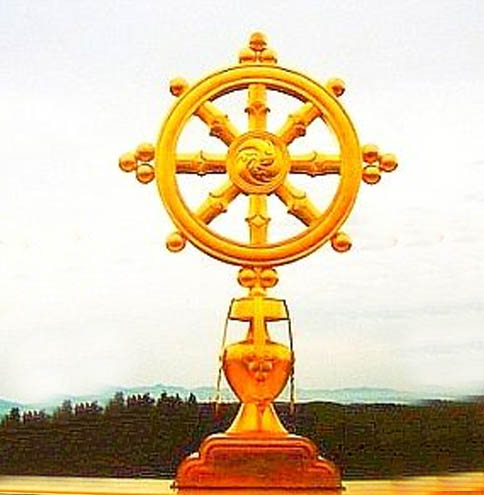Email : mbsinewdelhi@gmail.com | Call +91 7827262029
About Dhamma

There are Six Supreme Qualities of The Buddha’s
Dhamma which are as follows:
Well- proclaimed is The Dhamma by The Blessed One (svakkhāto Bhagavatā Dhammo).
To be self realised (sandihikō).
Is timeless and the Practice followed by Results without delay (akāliko).
Extends the Worthy invitation of “Come and See” (ehipassiko).
To be gone to the depth by oneself (opanayyko).
Self realised, each for himself (paccaaÿveditabbo viññuhi).
The mighty Prince Siddhartha’s most noble intention to become The Buddha, by finding the Truth and getting himself established in the Truth was rooted in sufferings and miseries faced by sentient beings living in all the realms of existence. By attaining enlightenment – the supreme stage of Purity and Awareness, The Buddha discovered The Noble Dhamma that puts a total end to all sufferings and miseries.
The Dhamma which The Buddha discovered by himself and revealed to the world is basically The Four Noble Truths (cattāri ariya saccāni). The Four Noble Truths are the main characteristics and unshakable base of The Supreme Buddha’s Teachings. These Noble Truths discusses about the various sufferings undergone by all beings (dukkha ārya sacca),
the cause of sufferings i.e. craving (dukkha samudaya ārya sacca), the ending of sufferings i.e. Nibbana (dukkha niroda ārya sacca), and the way to ending sufferings i.e. The Middle Path or The Noble Eightfold Path (dukkha nirodha gāmini patipadā ārya sacca).
Suffering is to be fully comprehended / realised. Craving is to be fully eliminated. Nibbana is to be achieved. The Middle Path is to be practiced / cultivated diligently by mind, speech and body until final Nibbana is achieved. Those aspiring to end suffering have to fulfil each and every one of these four chief characteristics by one’s own self. It is indeed inspiring that The Buddha vouches the reaching of enlightenment is possible in the here and now.
The Middle Path stipulated by The Buddha is as follows –
Right view (sammā ditthi); Right thought (sammā sankappa); Right speech (sammā vācā); Right action (sammā kammantha); Right livelihood (sammā ājīva); Right effort (sammā vāyama); Right mindfulness (sammā sati); Right concentration (sammā samādhi).
The Buddha encourages free thinking based on reality. He expounds The Dhamma which leads to the realization of truth. There is no room whatsoever for blind faith in The Teachings laid down by The Buddha.
The Buddha brings to light that the so called being is not created by a God or is Emanating from the Soul of a God (paramātman), but rather is constructed by the Five Aggregates (panca skandha), which are namely the physical formation i.e. the body (rūpa), feelings (vedanā), perceptions (sañña), mental formations/states (sankhāra) and consciousness (viññāna). These Five Aggregates are not permanent entities, but in fact are impermanent (anicca). What is impermanent has the nature of suffering and is transitory (dukkha). Therefore they are actually not mine, not am I / myself, and not my soul (anaa).
The Buddha further expounds – all bodies, feelings, perceptions, mental formations and consciousness whether past, present or future; personal or external; course or subtle; low or high; far or near; has to be understood by right wisdom in their real nature of impermanence, suffering and being not mine, not am I / myself and not my soul.
Whosoever is able to realize the reality of The Five Aggregates becomes detached from the world and worldly matter and is emancipated through detachment and by being emancipated totally ends the cycle of rebirth and suffering.
